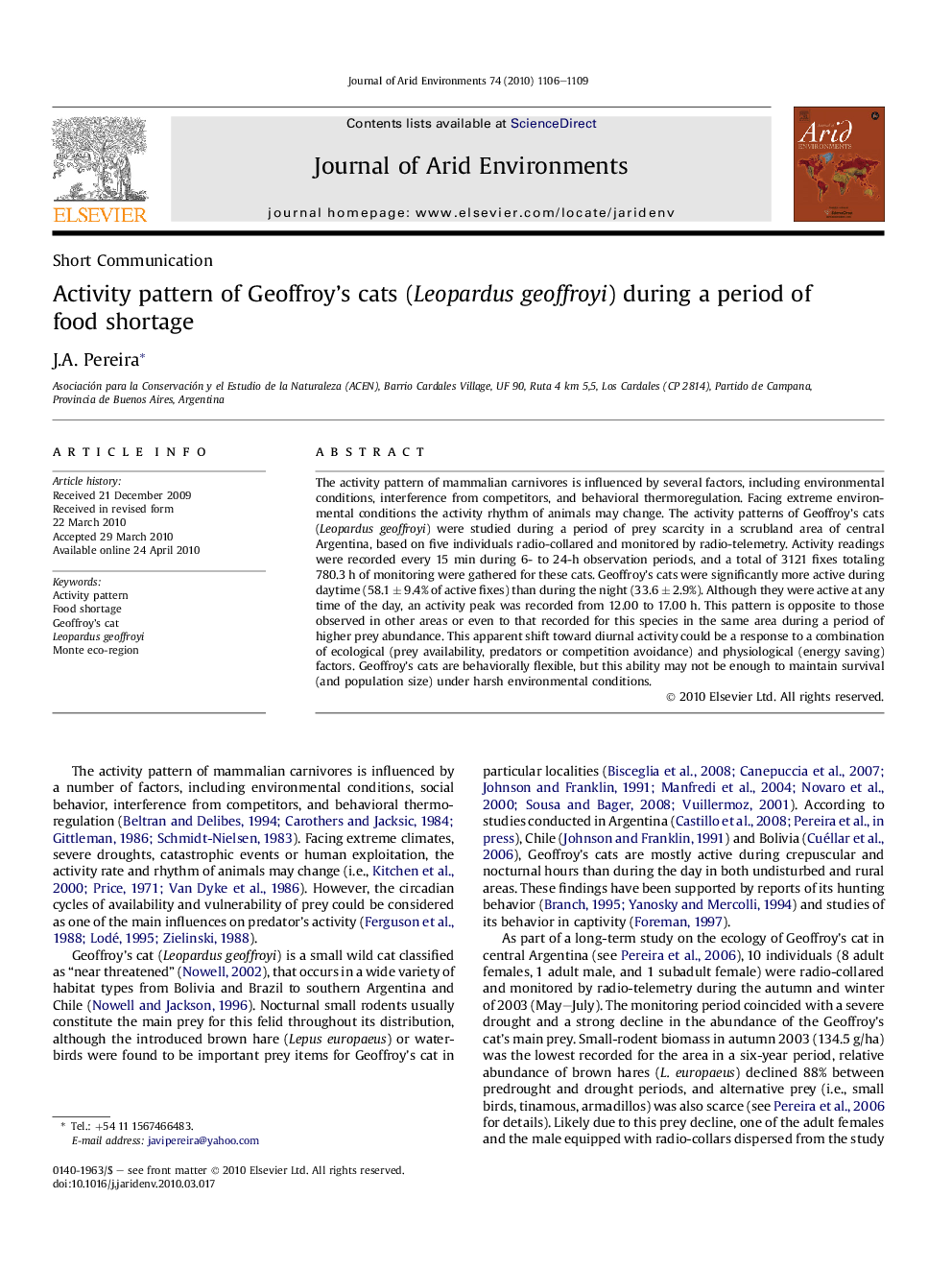| Article ID | Journal | Published Year | Pages | File Type |
|---|---|---|---|---|
| 4393809 | Journal of Arid Environments | 2010 | 4 Pages |
The activity pattern of mammalian carnivores is influenced by several factors, including environmental conditions, interference from competitors, and behavioral thermoregulation. Facing extreme environmental conditions the activity rhythm of animals may change. The activity patterns of Geoffroy’s cats (Leopardus geoffroyi) were studied during a period of prey scarcity in a scrubland area of central Argentina, based on five individuals radio-collared and monitored by radio-telemetry. Activity readings were recorded every 15 min during 6- to 24-h observation periods, and a total of 3121 fixes totaling 780.3 h of monitoring were gathered for these cats. Geoffroy’s cats were significantly more active during daytime (58.1 ± 9.4% of active fixes) than during the night (33.6 ± 2.9%). Although they were active at any time of the day, an activity peak was recorded from 12.00 to 17.00 h. This pattern is opposite to those observed in other areas or even to that recorded for this species in the same area during a period of higher prey abundance. This apparent shift toward diurnal activity could be a response to a combination of ecological (prey availability, predators or competition avoidance) and physiological (energy saving) factors. Geoffroy’s cats are behaviorally flexible, but this ability may not be enough to maintain survival (and population size) under harsh environmental conditions.
